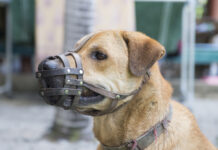Last Updated on April 15, 2024 by Dogs Vets
Introduction
Emotional support animals (ESA) provide psychological and therapeutic benefits to individuals suffering from mental or emotional health conditions.
These canine companions go beyond the spectrum of traditional pets. They are healers, trusted intimates, and constant sources of solace.
Emotional support animals can genuinely alter the way you perceive the world! Our one responsibility towards these furry friends is to legitimise their presence with an ESA letter that would help ensure the protection of legal rights that allow handlers to accommodate their ESAs easily.
Benefits Of Having An ESA Letter And The Legal Rights: Explained
Emotional support animals provide unconditional love and companionship, alleviate stress and anxiety, and provide emotional stability.
Individuals must get the legal document to avail themselves of this array of benefits and the lifelong companionship of these little furry friends. ESAs are protected under the Fair Housing Amendments Act. The FHA states that no individual can be refused accommodation rights based on race, color, gender, or heritage. In 1988, the FHA was amended to incorporate individuals with disabilities.
Under FHA, all landlords and housing authorities must allow you to live with your emotional support animal, irrespective of the pet policies. Moreover, the landlord can not exempt an ESA based on breed, weight, or species, provided they have a reasonable accommodation. However, FHA does not cover any damage or trouble caused to fellow residents, as the handler is accountable for the dog’s care and behavior.
HUD guidelines state that a landlord must respond to a tenant’s ESA application within ten days. Federal law also protects the ESA’s travel rights under the Air Carrier Access Act (ACAA).
Under the ACAA, ESAs were allowed to fly with their handler without discrimination. However, in 2021, the US Department of Transportation revised ACAA regulations and gave the power to the airlines, with only certain airlines now allowing emotional support animals on planes.
Moreover, you cannot take your emotional support animals to public places, as ESAs are not protected under the Americans with Disabilities Act (ADA). Thus, they cannot accompany their owners to public places like cafes, malls, hotels, etc.
Fast ESA Letter: Simplifying The Process
An ESA letter is essential for a stress-free living experience with your emotional support animal. One of the best and quickest ways to get an ESA letter is to use Fast ESA Letter’s telehealth portal, which can connect you virtually to a licensed mental health professional. You don’t have to spend much time searching for the best mental health experts and waiting for their appointments.
Their easy and quick process lets you receive your ESA letter within 24 hours. With an easy 3-step procedure, the individual gets their ESA letter from the comfort of their home.
Step-by-step procedure of getting an ESA letter.
1. Consulting a licensed mental health professional
Getting an ESA letter begins with finding an authorised mental health professional who can precisely evaluate the individual’s mental and emotional condition. You can access the top, most qualified, licensed medical health professional by creating an account at Fast ESA Letter.
2. Diagnosis of disorder
The licensed mental health professional will diagnose your condition and recommend an emotional support animal if that is good for your well-being. Depending on the individual’s comfort, this diagnosis can be easily made from the ease of home, either by a video or an audio call.
3. Receiving the letter
Once the consultation is done, if the LMHP finds the need for ESA suitable for the individual’s mental well-being, the letter signed by the top licensed medical health professional is sent in the mail, which the individual can download.
Fast ESA Letter ensures reliable 24/7 customer support even after receiving the ESA letter.
Importance Of Legitimate ESA Letter
Several websites offer ESA letters. However, the legitimacy of the ESA letter is essential, as an illegitimate ESA letter may put you and your support animal into trouble.
Therefore, an individual must choose a reputable and legitimate platform like Fast ESA Letter, the most reliable and trusted online platform for ESA letters. Their letters adhere to fair housing policies and are acceptable almost everywhere.
Moreover, organisations may sell other emotional support animal certifications apart from ESA letters or may sell an ESA registration.
However, that does not hold any legal weight. Support animal registration concerns adding your emotional support animal to a database, which usually delivers an ID card as proof of pet registration as an ESA alongside a unique ID for your emotional support animal.
However, it is essential to note that no official website exists for emotional support animal registration. Thus, ESA registration is voluntary and gives no additional legal privileges.
Getting an ESA letter is a must as it is the only legal document that gives you access to the federal rights protected for emotional support animals.
Also, the ESA letter is only considered legitimate if obtained by a licensed mental health professional on their letterhead and has their credentials on it.
Dispelling Common Misconceptions About ESA Letters
No other registration or certification is required apart from the ESA letter, which is the only legal and legitimate document for an emotional support animal.
Many organisations may sell certifications, tags, and ID Cards. However, it is essential to note that these do not hold any legal weight. Thus, any organisation or website selling them as legal identification for your emotional support animal may be a scam.
Moreover, organisations that promise instant turnaround on ESA letters without the consultation of a licensed professional are a big no. This indicates that they aren’t legitimate and their services may be scams. Getting an authentic ESA letter requires consulting a licensed mental health professional.
Therefore, you must look for the best and legitimate organisation for the emotional support animal letter, as an illegitimate letter can get you and your support animal in big trouble.
Conclusion
Emotional support animals can be a valuable part of mental health, offering essential support and comfort to those in need.
A legitimate emotional support animal letter from a licensed mental health professional is necessary for a healthy and hassle-free journey with them.
One must follow the legitimate and ethical process to get an ESA letter. Thus, individuals should make informed decisions and prioritise authenticity and legality while seeking an emotional support animal letter.
Facts Check
We hope you enjoyed this article… What are your thoughts?
Please feel free to share this article!
We strive to provide the latest valuable information for pet lovers with accuracy and fairness. If you would like to add to this post or advertise with us, don’t hesitate reach us.
If you see something that doesn’t look right, contact us!

















